Once upon a time in the early nineties…
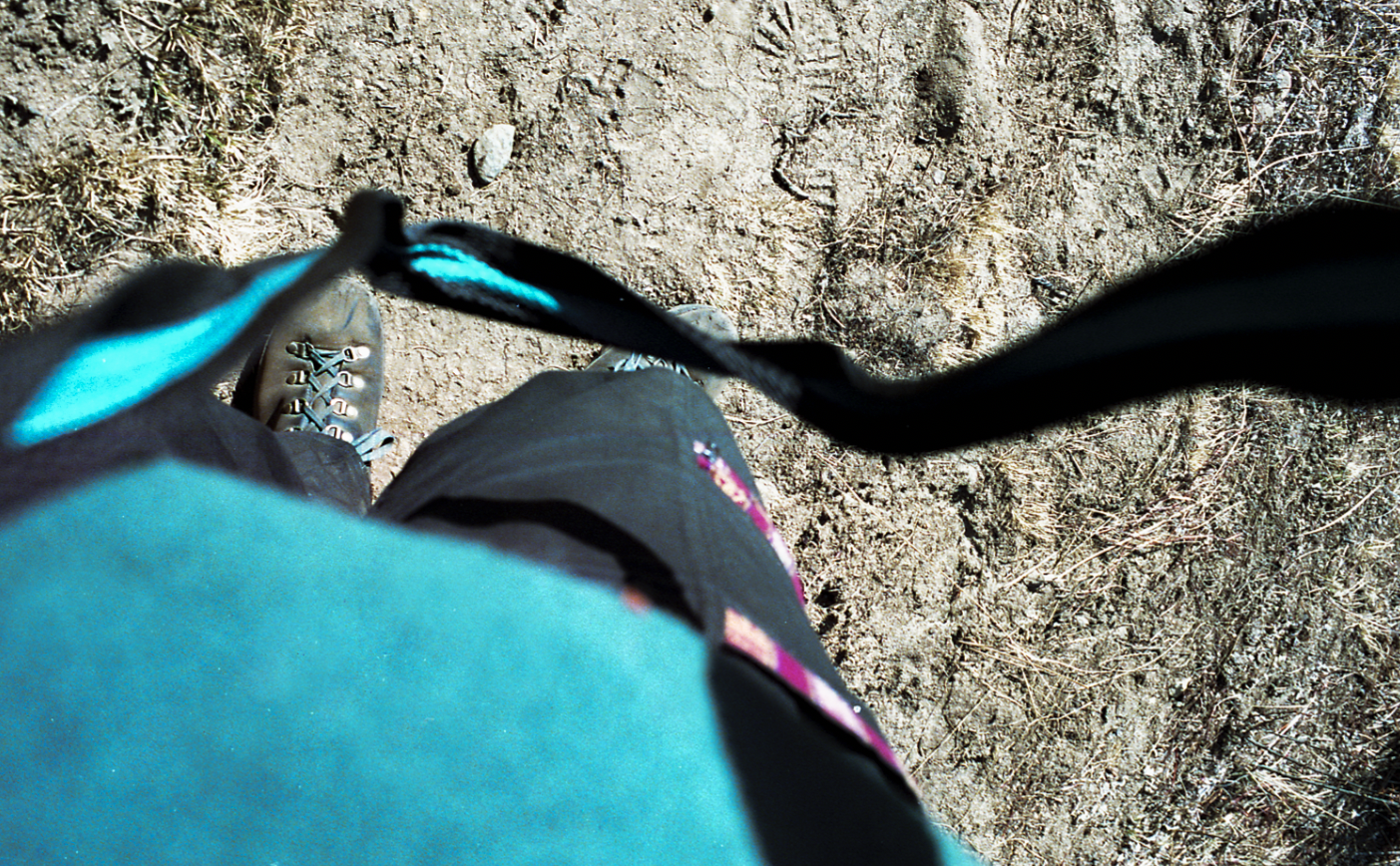
From a fairly young age I realised that I was not the type of person to stay in one place for a long time. That manifested strongly in my life, living on 3 continents, in 5 countries and visiting many others… Once upon a time, in 1992, I booked a trek through a subtropical jungle area in the south-east of Nepal. My plan was to ride an elephant and see the rest of local wildlife through the lens of my camera kit. It was going to go down on foot, so I started training for it a year ahead of time.
No more than a few weeks before departure, the trek was canceled because there were not enough participants… I felt robbed of a unique experience! And as I was complaining about the cancelation at my place of work, a colleague of mine stared at me with a look of disbelief on her face. “You were going to go to Nepal?”, she asked. “I am going there myself in December!” We got talking and she referred me to the organisation that she was going to be traveling with, that is today named Snow Leopard Adventures (www.snowleopard.nl). She said that, with my level of training, I could do any destination. She also told me right there and then that she did not want me on ‘her’ trip… Shocking, but fair enough. So I obliged.
Mount Everest Basecamp
When I checked for open spots, I found just one: a 4-week adventure to Mount Everest Basecamp, that is situated at an altitude of well over 5 kilometers… A bit more extreme than I had bargained for, but what the hell, I was in excellent condition, physically, so why not!? Spoiler alert: I did make it!
I did not have a lot of money at the time, so I booked myself on a broken-up itinerary that would see me touch-down in Athens (Greece), Kuwait, New Delhi (India), Dhaka (Bangladesh) and finally Kathmandu (Nepal). It took 30 hours to get there. I knew nobody in the group that was traveling to Mount Everest Basecamp and quickly found out that I was one of the ‘older’ participants. I was in my early thirties…
My fitness level, however, was as good as theirs. The only thing I had conveniently forgotten about was my bad knee. I hurt it during a bike trip years before. But that incident was as good as deleted from my memory. It came back to bite me in Nepal!
Learning to climb
On the first days of the trek, a couple of young girls told me they wanted to teach me how to properly walk on an incline. And later also: going downhill. They told me I was climbing too fast and that my technique would get me in trouble. Oh… OK. Although I listened to them and adjusted my ‘climbing skills’, my old knee injury started to play up pretty quickly. I hated going uphill, I loved going downhill and did so like a mountain goat. Too fast. It was asking for trouble and trouble is what I got.
Handing over my luggage
When I started out, I carried everything I had brought on my back. Probably close to 30 kg. I had super good gear, none of the big brands though. It came from a local trekking store in The Netherlands, my native country. The shoes kept me free from blisters, the coat kept me dry and warm and I was as fit as a fiddle.
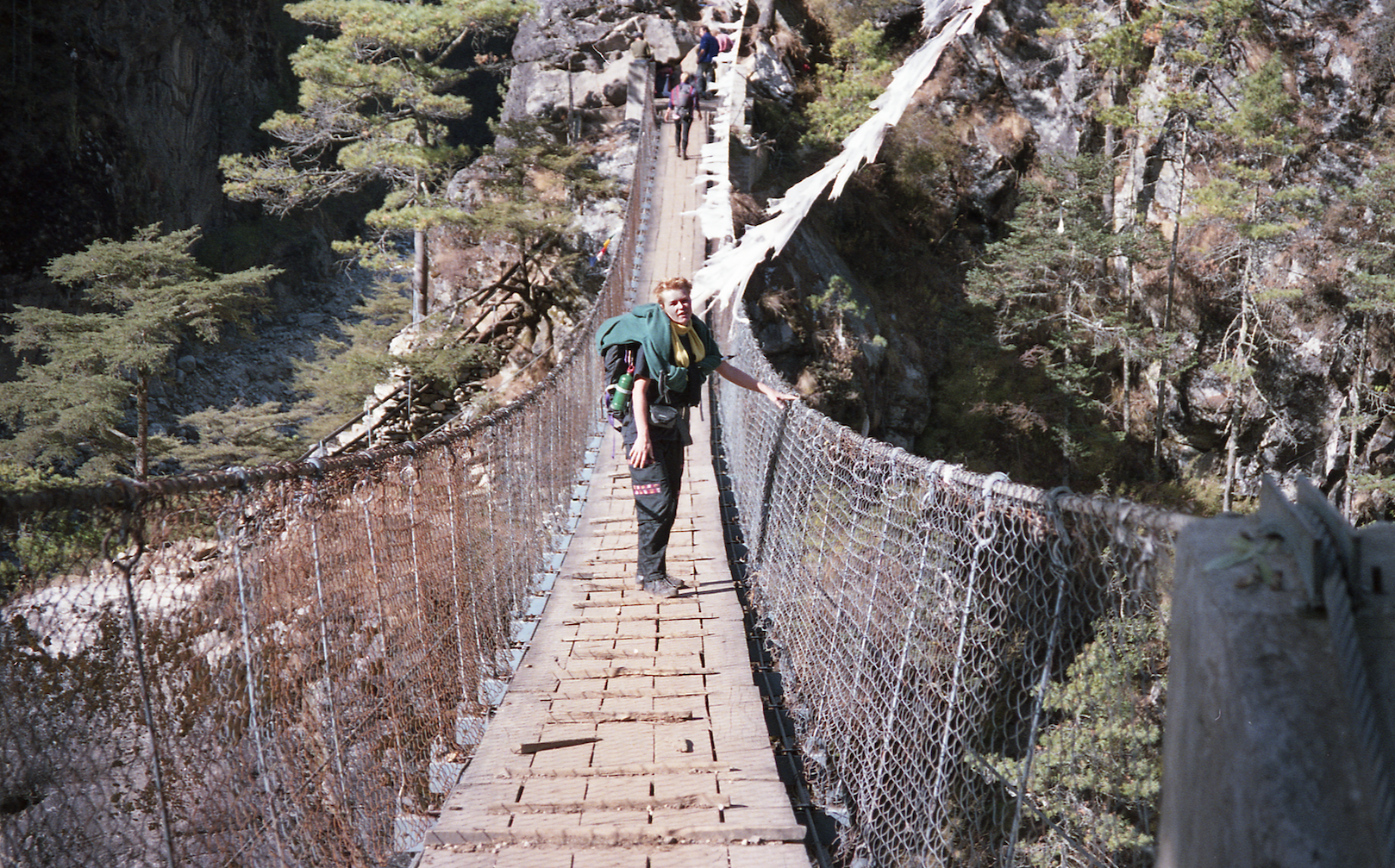
When my knee started to bother me, however, I had to give more and more of my luggage to the team of carriers that accompanied us and took care of us. I ended up with just dayfare and my camera equipment; the rest was carried for me and it was worth every penny I paid for that privilege. I still had 15 kilograms on my back though: camera gear was heavy in those days.
Silence at the back of the pack
Because of my knee, I was always at the back of the pack. And that was actually fine by me. The sirdar of our team (the main Sherpa guide) was supposed to always make sure that nobody got left behind. He was a lovely, wise middle-aged man named Anu and he often had to come find me after the rest of the group had reached camp. We also spent as many hours in wonderful conversation as in complete silence. The lasting memory of this trip was that silence.
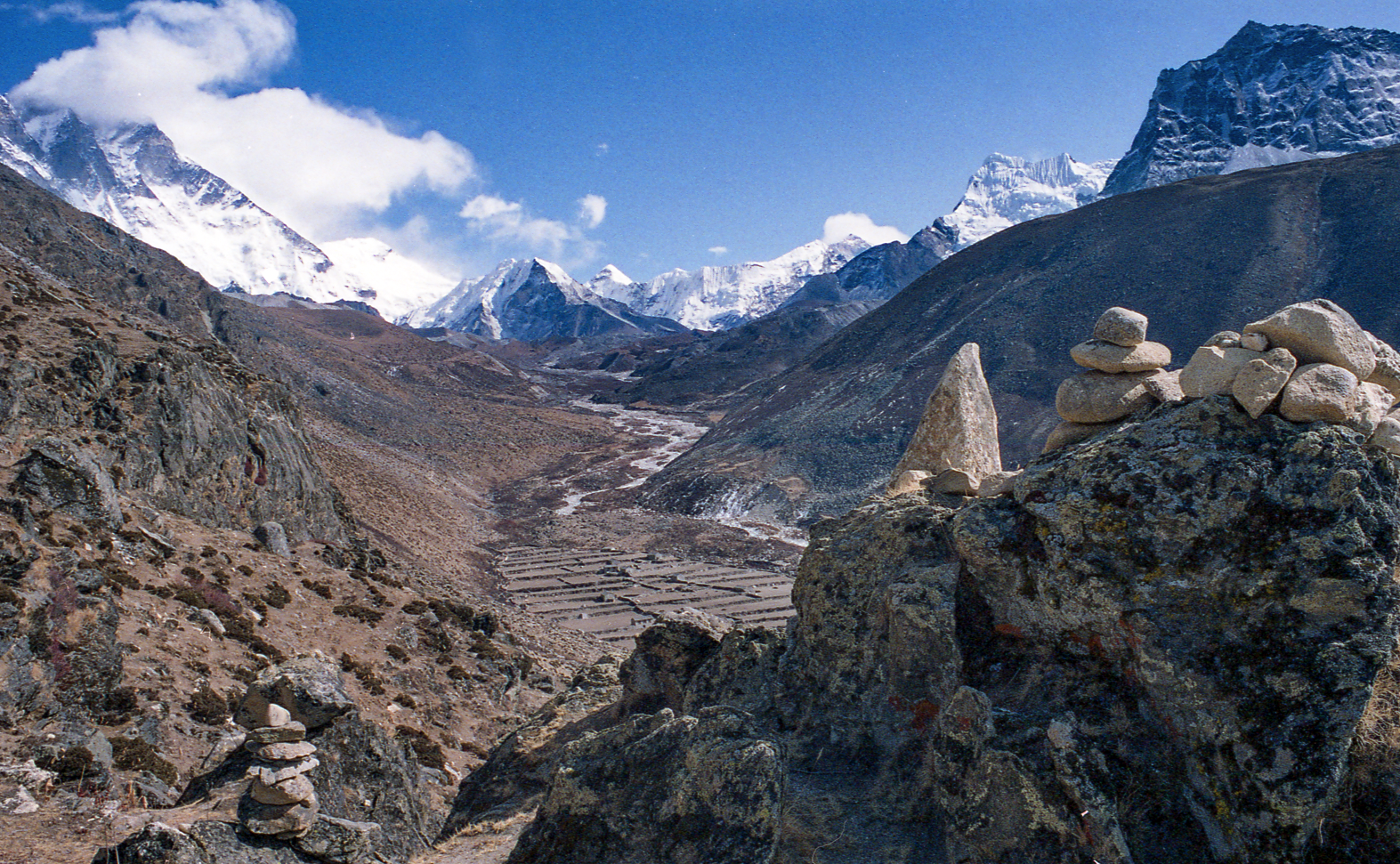
In the high mountains of the Himalayas there are no planes, no trains, no cars, no electrical noises. No crowds of people talking. It is often so silent that you can hear a pebble or a grain of sand move. It is just absolutely fabulous. More than once Anu found me sitting by the side of the trail, at the end of the day, in that tremendous silence, enjoying the stillness and the view… I was soaking it up. Reluctant to keep up with the group, where there was talk and noise… they went too fast for me anyway.
Throat trouble
Our first high point was at an altitude of 1900 yards, almost 2 kms. I had some trouble making that climb because of my knee. I remember catching my breath, leaning my forehead on my cane, when I slipped and the handle hit my larynx. I thought I would die right there and then – I could not breathe. We put some cool soda bottles on it by way of an icepack and I was able to continue, but it was a shock to my system. We had come across an elderly man, who was on his way back with a single guide and a donkey to carry his gear. He had been in a much more serious accident than myself, but there are many places in those mountains that cannot be reached by any means of transport. A helicopter costs a fortune, so if you can, you will walk back the way you came to seek medical treatment. I did not want that to happen to me!
The mountain spirits
So I worried regularly about the state my knee was in. It bothered me more going downhill than uphill and I came to love the slow, steady pace I learned to use to conquer a serious incline and hated going down the hill. Anu told me a lot of stories about the mystery of the Himalayas and one of them was about the medicine men that live in some tiny settlements in the middle of nowhere. How they would plead for the assistance of the mountain spirits to help heal somebody. The details of how they did that were very secret, but one of the things that was often a part of the process was a special ‘talisman’, that supposedly could only be seen and received by the person for whom it was meant.
I am not giving up!
One day, my knee was bothering me so much that I was considering bowing out of this adventure. I knew that the group would come back the same way, so I asked Anu if there was any chance I could just stay behind in a village and wait for their return. It would give me time to heal and I would not have to run the risk of permanently hurting my knee by walking up to Everest Basecamp. It was an option for sure, but he told me that I should not worry, if the spirits of the mountain meant for me to make it, I would make it. And that I should not stop just then. It was going to be all right, he kept telling me. I believed him.
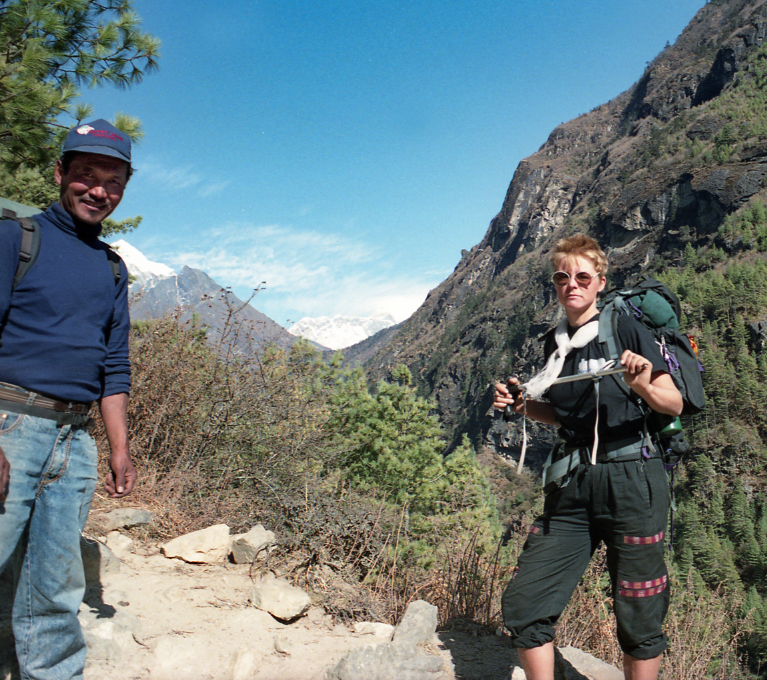
The talisman
Anu hung around with me on that day, in the back of the pack, helping me carry my already lightened load. At some point, he was pushing me to go a bit faster, which was not really like him. I tended to stop regularly to make photographs. The country is unbelievably beautiful and I just could not stop clicking my camera. And then I saw it. A talisman. It was knee-high, it was very colourful, it was right there in the middle of the trail and it had an injured knee with a cane on it… No way! It stopped me in my tracks, despite Anu trying to make me walk past it without looking at it. He almost walked over it, to my surprise. Many people from Nepal cannot pronounce the ‘F’ and he kept saying: “Come, come, no take poto’s, no poto’s, come…”. I really wanted to respect that but I could not keep myself from snapping a picture of that ‘talisman’.
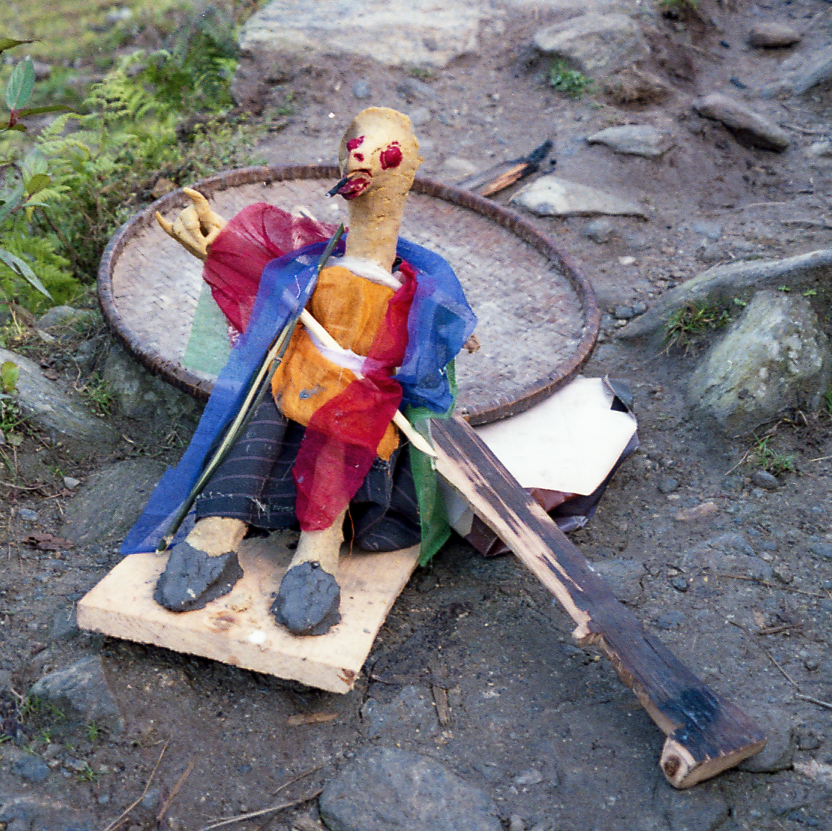
I thought about it the rest of the way and that evening, at camp, I asked some of the others if they had seen it. They had not. Nobody saw it. They had no idea what I was talking about. Even Anu said that there was nothing there to see, I must have imagined it. I was baffled. And I started to believe that this ‘talisman’ was there especially for me. To help my knee to heal, to help me to reach the destination: Mount Everest Basecamp! So I trodded on and on.
We never got to Basecamp… On the day we were scheduled to go, the weather was very unstable. So we got to see it from 500 meters distance. And from a higher standpoint: 5644 meters or yards.
Commiserating with a group member
We were the last expedition that went that way for the season and although we would have been able to reach it, we would not have been able to make it back to our camp unscathed because of impending weather. It was a disappointment to all of us, but what can you do? You have to trust the local guides. So, instead, we climbed a mountain named Kala Pattar, with an altitude of 5,644 yards. Almost half a kilometer above and across from Everest Basecamp. The night before our thermometers had shown minus 47 degrees Celsius. It was the coldest I had ever experienced. Looking back on that experience, it is unbelievable to me that I spent that night in a tent, albeit with all of the clothes on that I had brought…
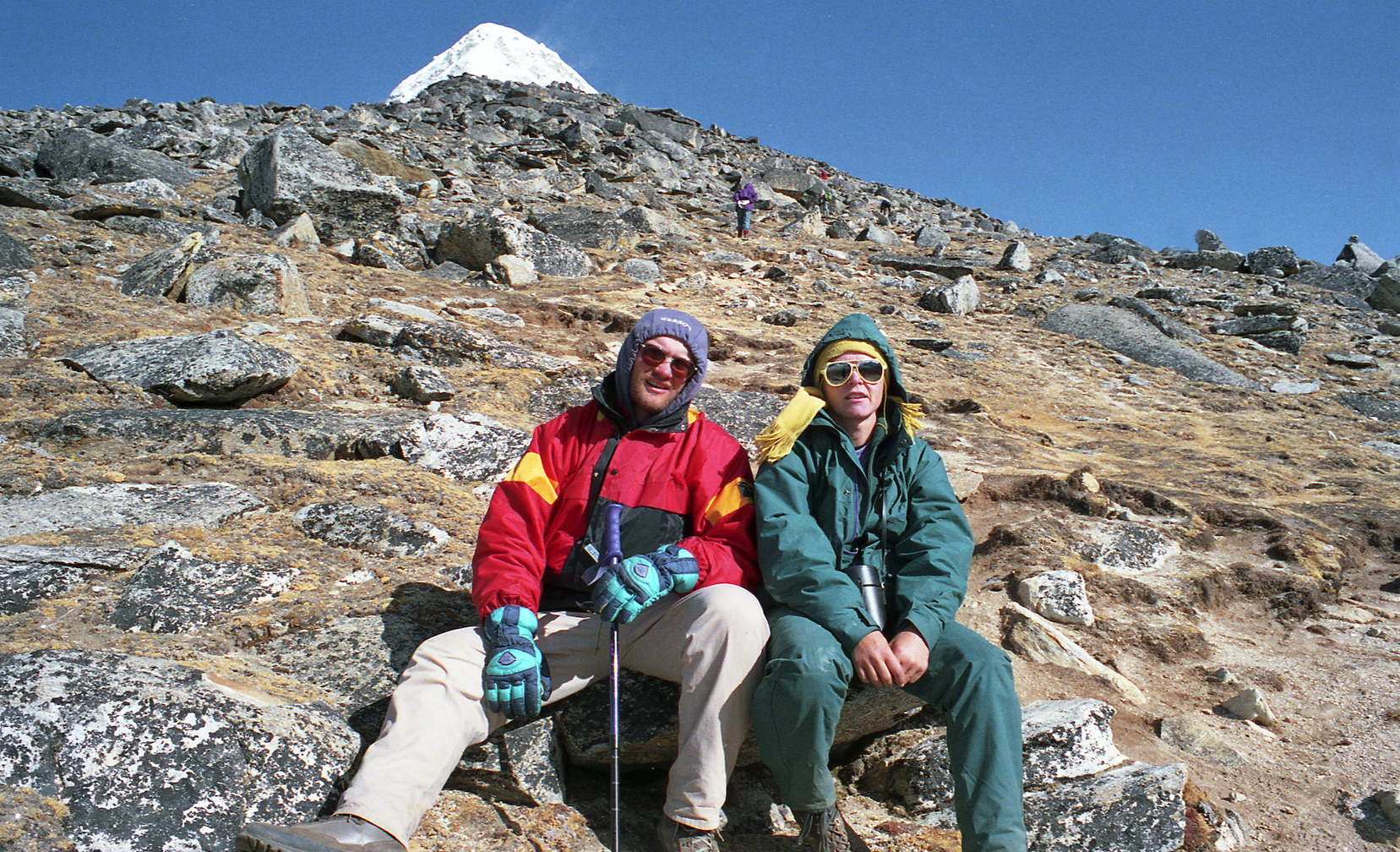
Take a picture: we are not continuing… (but we were)
I did not storm up that mountain by the way, like the younger members of our group. I took my time and was accompanied not just by Anu, but by another member of our group who had twisted his knee a bit earlier. I remember his name to be Max and he was a dentist. How come our memories log that kind of useless information and forget essentials…? 🙂 He and I sat down every 10 minutes and told Anu to make a picture of us every single time. We did not think we would make it. We felt like the seniors of the bunch! Our lungs were working fine, we had no ill effects due to altitude, but our knees were fighting us every centimeter of that last part of the trip.
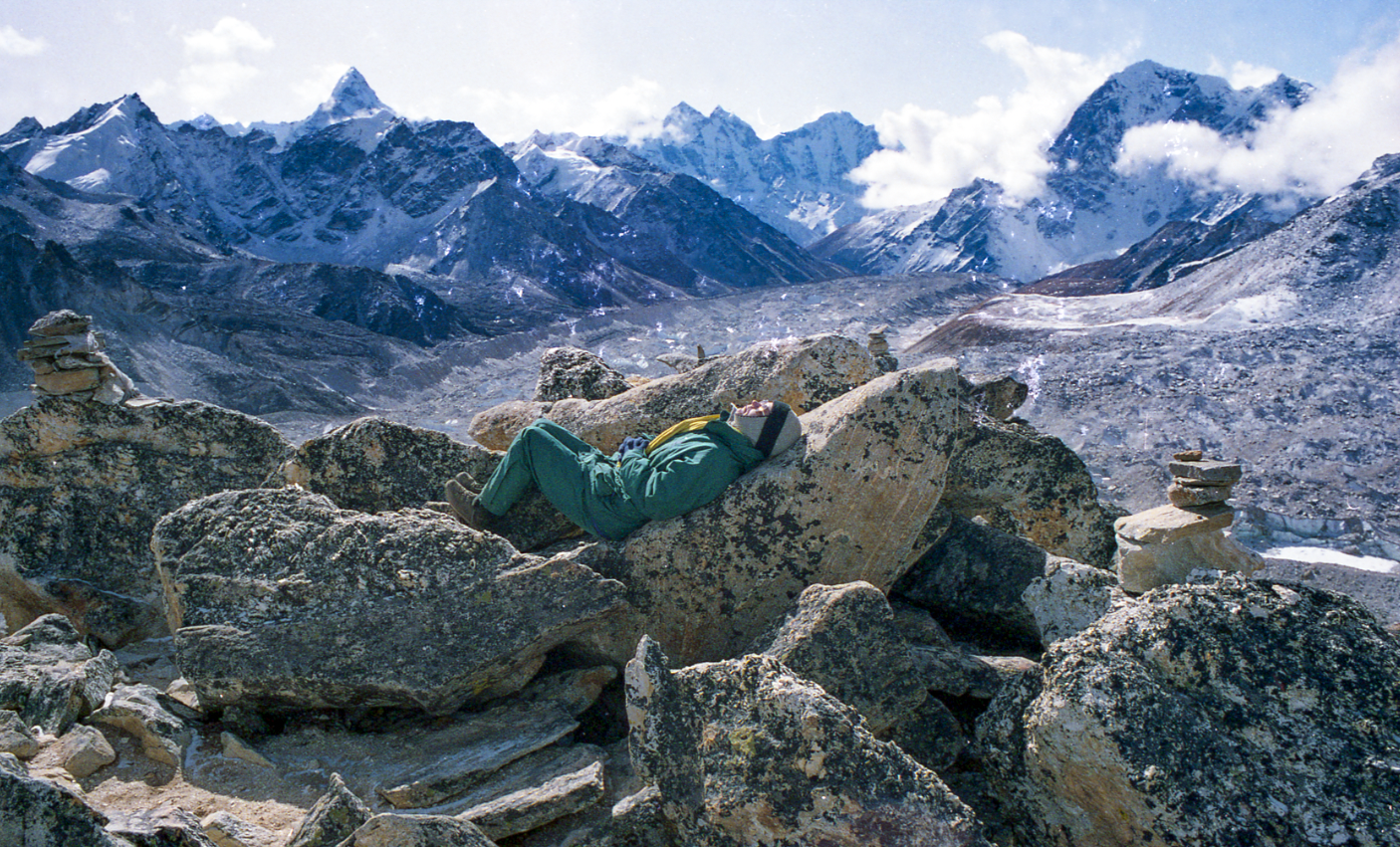
From bad mood to total exhilaration in 15 minutes
When I finally arrived at the top, I was in one of the worst moods of my life. I was cheered and joyously welcomed by the leader of our expedition, but I simply waved him off, found a flat rock and laid down on it, eyes closed. It took 15 minutes for me to become truly aware of the fact that I had made it. And when I opened my eyes, I saw the most wonderful view that I had ever seen. I looked out on the Himalayan mountains, covered in snow, I saw the top of a big cloud system and I saw the small yellow dots across from ‘my mountain’ that were the tents at Everest Basecamp. And then I saw Mount Everest. Incredibly higher than anything else around it. Sagarmatha in Nepalese. Chomolungma in Tibetan. The Holy Mother of all mountains, the top of the world.
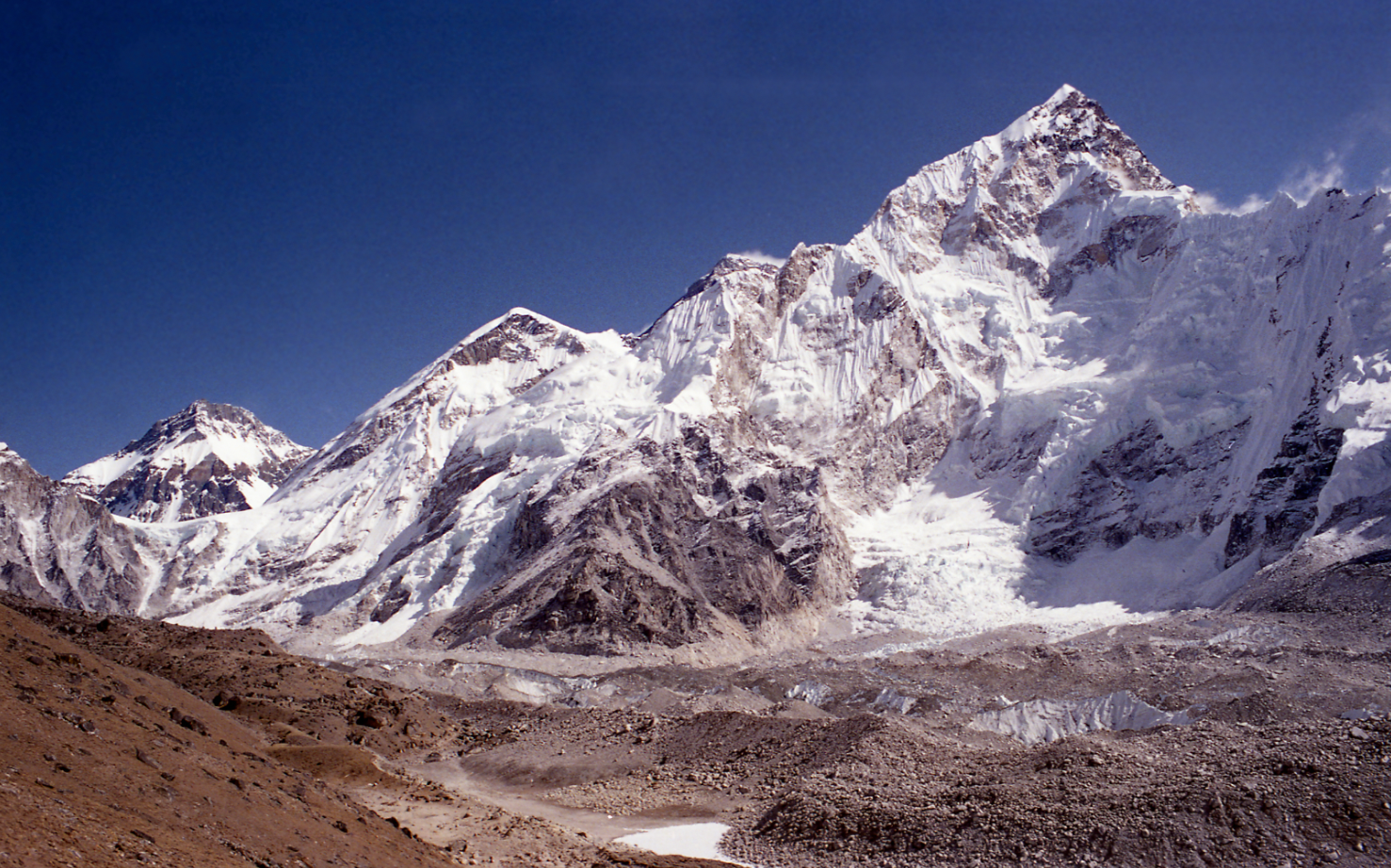
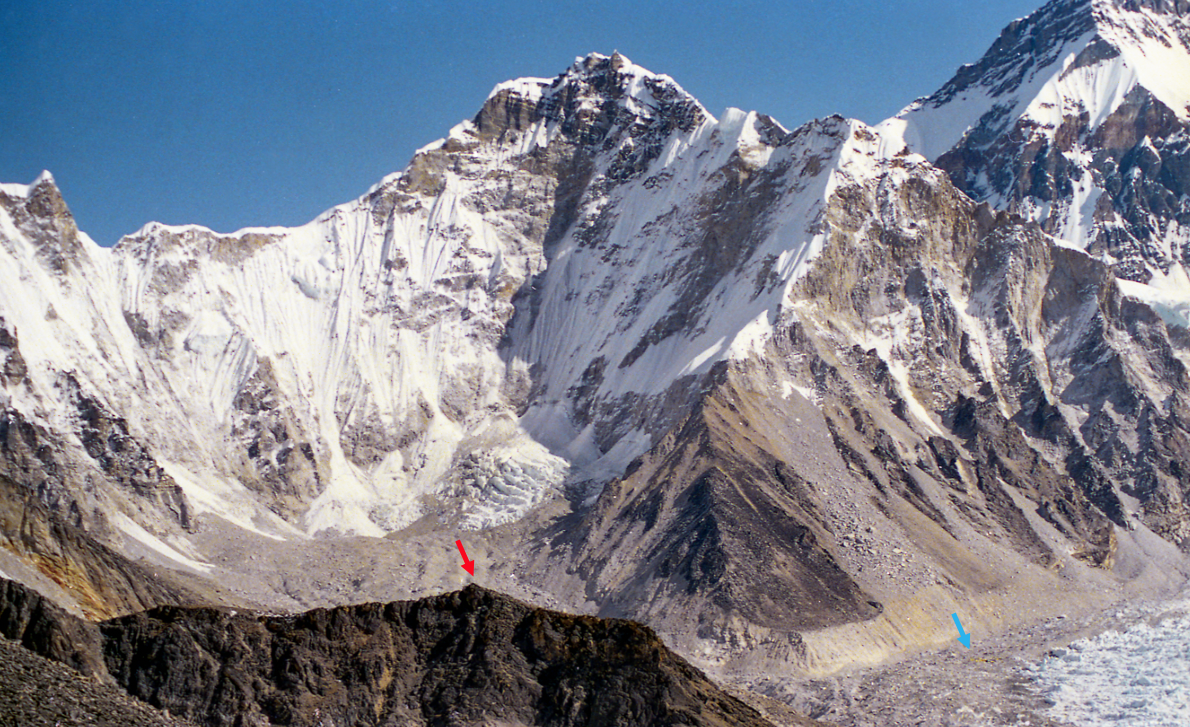
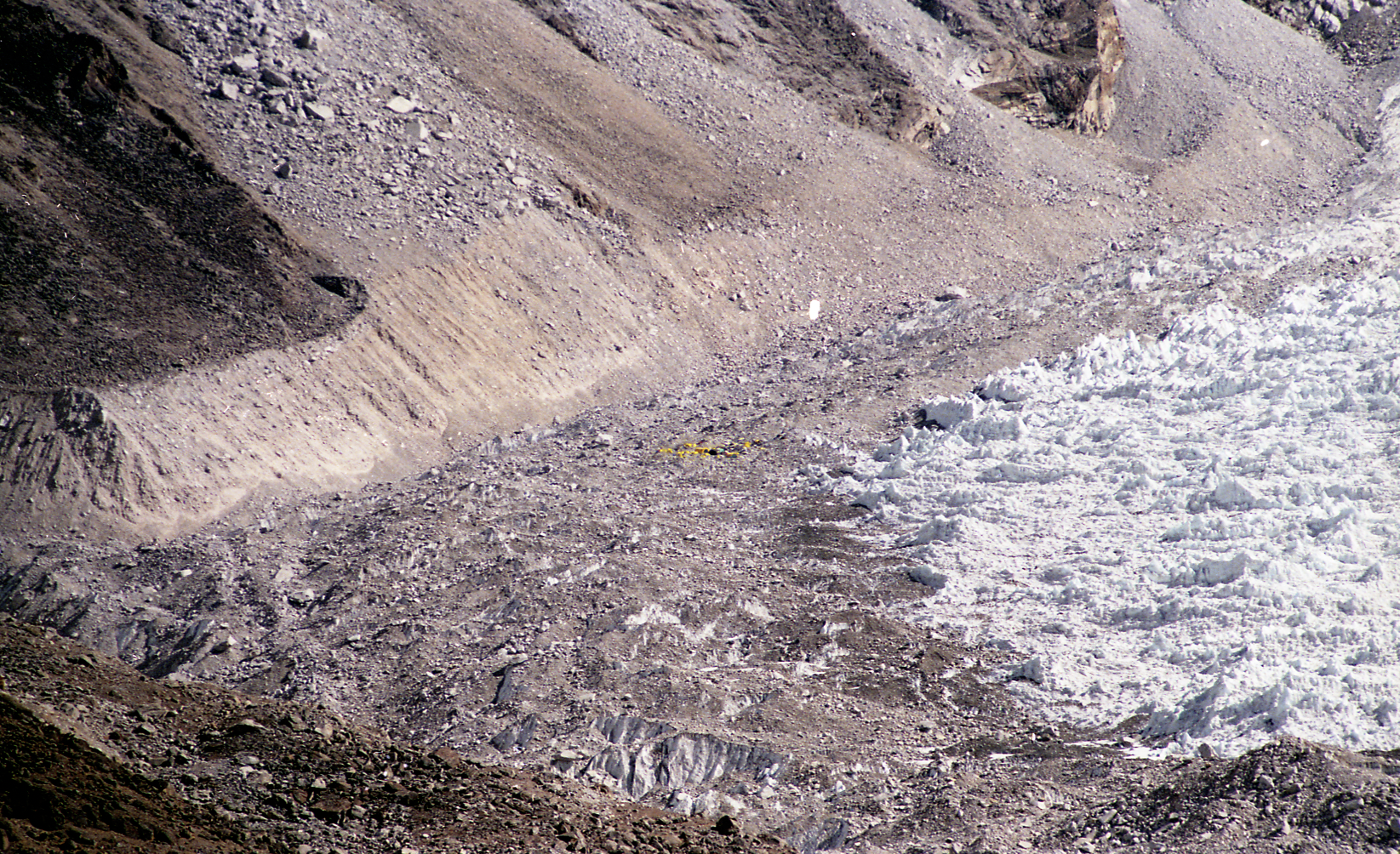
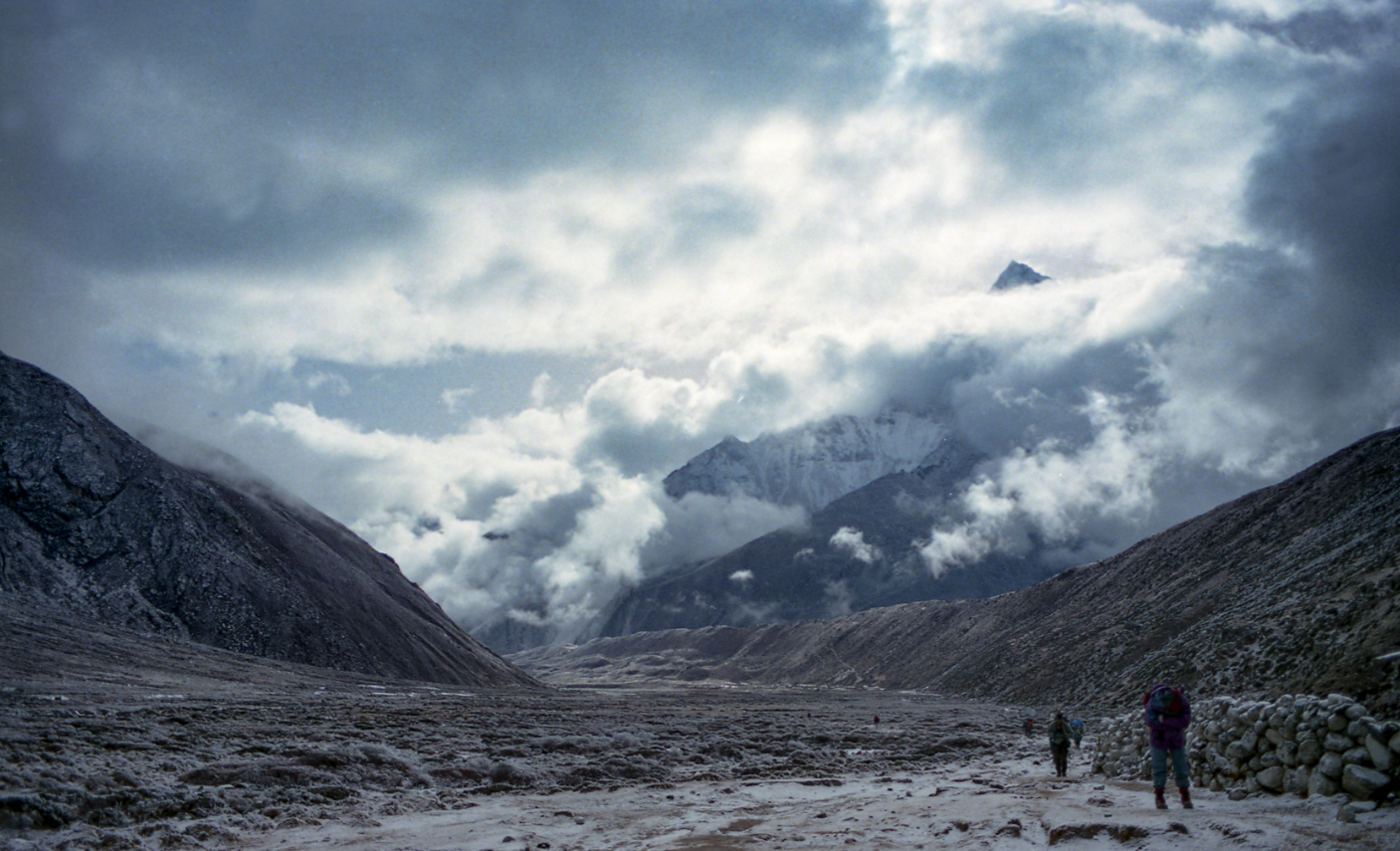
One step at a time
When you do a thing like this, you do it one step at a time. That is what brings serenity. I think that is why, to this day, I don’t mind walking up a mountain or even an incline. You keep your head down, you get into a rhythm and just put one foot in front of the other. You don’t keep looking at the top, far ahead of you. You just keep going. And all of sudden, you are there!
You only realise what you did, when you are on your way back. We did not just walk back. We danced back, we had wings! Our lungs were wide-open and we sang, most of the way. This was in part due to the fact that 4 weeks at high altitude raises the number of red blood cells in your system, which means you have more oxygen in your body. It gives you wings and this physical effect remains with you for 3 months or so. You will barely feel cold afterwards, you will have more energy than you ever thought possible. And of course there is the absolute high of having achieved your goal. An incredible feeling.
Giving thanks
Silently, in my head, to this very day, I humbly thank the spirits of the Holy Mother mountain for their healing powers. It is a true miracle that my knee stayed strong for the duration of the trek. Back home, it took a year of Physical Therapy to truly heal it. But there, in the Himalayans, it carried me, so that I was allowed to see the stunning force of nature that is Mount Everest.
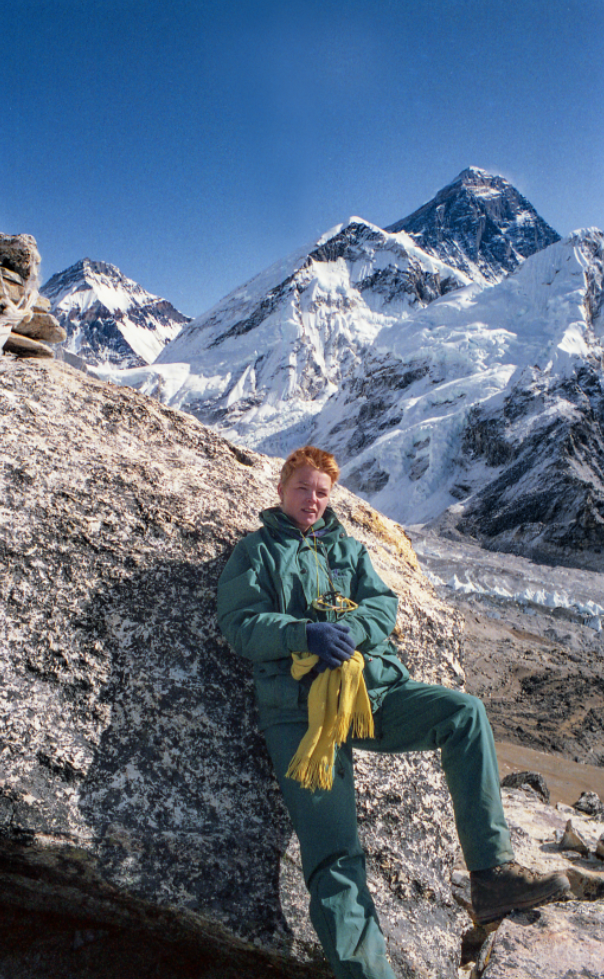
Everest in the 2000nds: a smelly mountain…
Nepal has been hit with several natural disasters since I was there years ago. One can argue that some of that is to be expected, as the country is located on several fault lines.
But this February 2024, I heard that due to global warming, a lot of the ice is melting, exposing a lot of shit that we humans left there. And I mean this in the most literal meaning of the word. Due to extreme temperatures, excrement left on Everest does not fully degrade. Mount Everest stinks…The municipality, which covers most of the Everest region, has introduced the new rule as part of wider measures being implemented.
Poo bags
“We are getting complaints that human stools are visible on rocks and some climbers are falling sick. This is not acceptable and erodes our image,” the municipality, which covers most of the Everest region, has stated.
Climbers attempting Mount Everest, the world’s highest peak, and nearby Mount Lhotse will be ordered to buy so-called poo bags at base camp, which will be “checked upon their return”. How exactly those checks will be done is unclear. But it does make you think twice…
Read more about this here:
https://www.bbc.com/news/world-asia-68237123
During my own trip, special latrines were dug each night at camp. And before we left, these were covered up with soil for as long as possible. When the land was starting to become more frigid, we often were close to a lodge that had ‘toilets’ that could be used. But we also used ‘the land’, I believe. Everest for long years has become a tourist attraction and if you were willing to pay the fee, even the weakest of humans were brought to its top. There are many ongoing conversations about the exclusivity of reaching the top. It feels as if it almost has become too easy…
